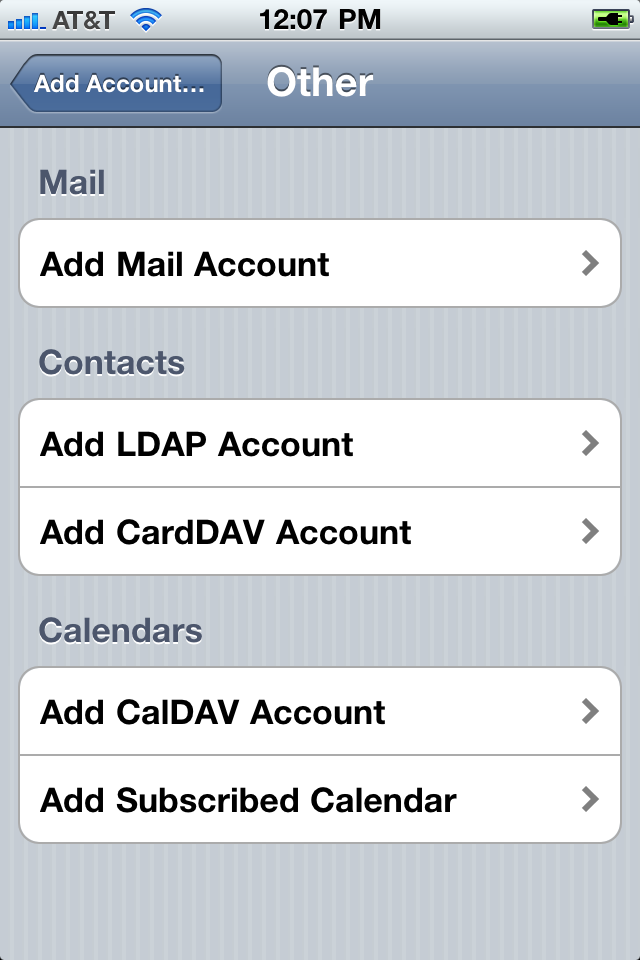The Sakai Foundation has recently announced the candidates for the Sakai Board election.
http://sakaiproject.org/2010-sakai-board-elections
While some people consider it quite tacky, I have a history of making election commentary on the Sakai Foundation Board of Directors candidates and making a recommendation for the voters. Perhaps it is because I secretly want to be a news anchor on television and this is the closest I get.
If you are interested, take a look at these historical posts:
I refrained from such commentary in 2009 as I was running for board myself and did feel it inappropriate to comment on my fellow candidates in the class of 2009.
Who You Vote For Matters
You may think that it really does not matter who is on the Sakai board and that you can just vote by name recognition and it will be OK. That could not be further from the truth. The Sakai Board is responsible for the long-term viability of the Sakai Foundation and this is no laughing matter and the wrong board could literally put the Foundation out of business, destroying something that we all hold very dear.
You may be saying, “Huh? – what could be simpler? We all send the Foundation money and have a nice conference each year – what is so hard?” The problem is that the Sakai Board is responsible for setting priorities, hiring an Executive Director, and deciding where to spend that money. The Sakai board is 100% responsible for the financial health of the Sakai Foundation.
Let me give you a quick score card on the Sakai Board’s performance from 2006 – 2008 from a simple finance perspective. You can look at all of these documents (thanks to Seth Theriault) at the following URLs:
2006 Form 990: http://bit.ly/r9lP8
2007 Form 990: http://bit.ly/VefSc
2008 Form 990-EZ: http://bit.ly/2LurID
These are the tax returns that are filed by the foundation each year. The table below shows the excess of revenue over expenses and the “fund balance” at the end of the year from these 990 statements:
YEAR NET CHANGE BALANCE
2006 $111,453 $144,007
2007 $294,697 $438,704
2008 $-209,047 $229,657
Note that the expense costs for the December 2007 conference are
shown the 2008 numbers so the gain in 2007 would be lower and
the loss in 2008 would also be lower if this expense were moved
from 2008 to 2007.
I would note that all of the financial data in this post is simply from the required public reports above. While the 2009 tax return is not yet filed, you should expect to see 2009 financial performance very similar to the 2008 financial performance (i.e. kind of depressing).
You can see that in 2008 (and 2009) the board pursued a strategy to expand spending, ignoring any need for reserve funds. They first spent the reserve built up during 2006-2007, and then added a three-year membership model, reduced the conference subsidy and other measures in order to improve cash flow so as to maintain high levels of spending to meet the board’s vision of what the Sakai Foundation should be.
People have raised the “financial red flag” from time to time – Seth Theriault sent this E-Mail message to the community so we only have ourselves to blame if we are in the dark:
Sakai Foundation governance links (November 24, 2009)
When I ran for the board in 2009, my promises to the community if I were elected were (a) bring a focus back to fiscal responsibility and balance the budget and (b) increase transparency of the board itself.
The Board in 2010
When I joined the board in January 2010, things were in pretty bad shape – because of incomplete financial reports, the board was barely aware of precise the detail of their financial situation and some board members were still defending the notion that continued high levels of spending was “worth the risk”. With the departure of Michael and the need to hire a new Executive Director, we were a bit distracted for the first half of the year and once we had Ian in place we could get back to the financial situation.
I am happy to report that the board (for the first time as best I can tell) had complete, detailed, and representative financial reports at its September 2010 meeting. There is no more talk of “deficit spending is worth the risk”. We have a plan in place to address financial issues that I am very optimistic will succeed and what is most important, the board is very focused on monitoring the financial plan as it unfolds.
Another important step that was taken in 2010 is a subtle change in the board’s thinking as to the mission and purpose of the “Sakai Foundation”.
I (and I think many others) see the foundation’s primary purpose to provide common services, a conference, and an intellectual property holder so the organizations and people around the various Sakai efforts (core, contrib, commercial, etc) can work more efficiently together. The board from 2006 – 2009 felt that in addition to this traditional open source enabling role, that the board was responsible for driving the Sakai product forward according to a roadmap that came from the Foundation.
This foundation-owned roadmap was to have times and dates and scope and the foundation was to manage the community to meet the roadmap. In particular, the foundation decided that Sakai 3 (Now the Sakai Open Academic Environment) as to be the next generation of Sakai and that the foundation in its product role was going to end-of-life Sakai 2 and move the community development resources from Sakai 2 to Sakai 3.
The 2008/2009 board of directors felt Sakai was “one product” that they owned, controlled, and managed as if the Sakai Foundation were an LMS vendor. But this was not what the Sakai *community* wanted to do. Some members of the community were deeply invested in Sakai 2.x and other members of the community were deeply committed to Sakai 3 (now OAE). Everyone loved the idea of Sakai 3 but since Sakai 2 was the production shipping software, it was hard to stop working on Sakai 2.
Thankfully at the June 2010 Board meeting in Denver, the board agreed that the Sakai Foundation really had two projects – both of which were wonderful and had strong support in the Sakai community. At the Denver meeting, the Sakai 3 Steering Committee was formed based on how the Sakai 3 community wanted to organize itself and the Sakai 2 Technical Coordination Committee (TCC) was formed to reflect the way that the Sakai 2 community wanted to organize itself.
While this may seem like a bit of a trivial change, it is a marked difference in the board’s view of its own mission. In June 2010, the board accepted the fact that Sakai was indeed a multi-project organization where projects had some autonomy. While this may seem as completely obvious to an outside observer, it is an important step to align Sakai’s general approach to building open source communities with the “lightweight board” approaches in used in Jasig and Kuali.
Now in all three organizations, the foundation board provides for the common good and the projects govern their own resources and roadmaps. This change in the Sakai board’s philosophy is what makes a Sakai-Jasig merger feasible. As of June 2010, the Sakai and Jasig Foundations are very similar in mission, structure and approach. Prior to June 2010, a Jasig/Sakai merger would be a culture clash that simply would not have worked. In June 2010, the Sakai Foundation structure and mission started to look a lot more like the multi-project structure and mission of Jasig.
NOTE: I do need to make one thing perfectly clear in case you mis-interpret this post as I am mixing a lot of things like finances, mission, and merging. The Sakai Foundation is on solid financial footing and so is the Jasig Foundation. The Sakai Foundation has solid revenue in the range of $700K and the Jasig Foundation is around $220K (This is from the Jasig public 990 tax return). The adjustments to stabilize Sakai are simply to reduce expenses and things should turn around quickly. Please do not think of the merger as a reaction to any of the financial concerns in Sakai. I feel that the merger will greatly strengthen the culture, projects, and communities of both Jasig and Sakai – and that is the motivation for the merger – period. Making the communities better, stronger, and more effective is the only defensible reason for such a merger.
Important Note
Also, please do not think that my comments in this article are intended to be critical of Michael Korkuska (the other member of the ex-Director club). He took over during a difficult time with a board that was bent on spending money and telling the community what to do. Michael did many great things during his tenure including several years cleaning up the financial aspects of the Foundation starting as a University of Michigan project and them moving toward an independent non-profit. Also, Michael got Sakai 3/OAE started and built a community around the effort. The OAE Steering Committee and the focus and approach used in that project can be directly traced to Michael’s influence and effort. I have considered Michael a good friend and fellow traveller from the moment I met him and am very pleased with his contributions to this community.
Michael was doing what any executive should do in attempting to implement the goals and objectives of his board of directors. As a former Executive Director myself, I am quite familiar with the danger of an Executive Director with a different agenda than that of the board of directors. This is exactly why who you elect to the Board election matters *so much*. No matter how talented nor visionary an Executive Director may be, they cannot cross swords their board of directors.
Board Elections
I give you all this back story to emphasize to the voting members of the Sakai Foundation that your vote is very important and should not be shrugged off where you simply vote for a name you have heard a lot over the years.
The Foundation Board is in the midst of several important transitions:
- From risky spending driven by board agenda to close monitoring and wise financial oversight by the board
- From a single-board, single-product, single-governance focus to a multi-project, multi-governance focus where the foundation enhances communication and relationships between members
- Potentially becoming a much larger and more influential worldwide organization by blending the several Sakai projects with the multiple projects that make up the Jasig community to create an overarching organization with the scope of non-administrative academic computing
These are great developments but are very recent and my hope is that we don’t end up with new board members that will not be supportive of these directions. I want to see us solidify our financial oversight and commitment to the proper mission for the Foundation over the next year – not re-debate whether or not we should go back to the policies of the 2008/2009 Sakai Board.
Note to self: I do need to write that blog post about why the Jasig / Sakai Merger is so good for us all and why I am so excited about the prospects of a merged organization.
Board Candidates
I am not going to tell you who to vote for but I will give you reasons you might want to consider in making your choices. I give you some comments in no particular order.
David Goodrum, Indiana University
David has an excellent perspective and long history in the Sakai and other projects. Indiana as the single largest installation of Sakai 2.x and strong contributor to Sakai 2.x and a very strong supporters of Sakai OAE(Sakai 3) as well as involvement with Jasig and Kuali. David and Indiana are in the ideal position to see the entire scope of what the Foundation needs to consider. David has broad expertise ranging from IT to Teaching and Learning.
Seth Theriault, Columbia University
Seth is too quiet sometimes – but he has been an influential part of the Sakai Community since the very beginning and has been passionate about quality and attention to detail. He spends long hours poring over everything from code commits to governance documents to release notes. He is a quiet leader respected by all who have worked with him. He was the unanimous selection as the founding Chair of the Sakai 2.x Technical Coordination Committee. I can think of no one better to help the Foundation straighten out its finances and get things nice, clean and crisp and set up for long-term stability.
Josh Baron, Marist College
Josh works tirelessly in his role as Sakai Foundation board chair. He has an amazing ability to listen and guide conversations and then represent us publicly as the chair. His work on the Jasig merger was excellent and shows great leadership and dedication.
Commercial Affiliates on the Board
As I said back in 2008, I continue to be strongly opposed to the election of anyone from a Sakai Commercial Affiliate to the Sakai board. The individuals and companies that partner with Sakai are a highly valued part of our community – but they have different needs and often quite different priorities than the Academic institutions that founded and are the backbone of the Sakai community.
I could imagine a future where our mission, finances, and guiding principles are clearly articulated and we have stopped debating our approach and mission. But for me as long as we are in transition, it is important to keep our board focused on serving higher education’s needs while making our intellectual property available to our commercial partners.
Another thing to consider is to look at the Ohloh contributor lists for Sakai. While Ohloh is only one measure of contribution, it would be nice to see our commercial partners more directly involved in the production of the community release of our products before we start electing our commercial partners to board seats.
If you look at the uPortal Contributors, you see a very strong contributions to the community release of uPortal by several Unicon employees (4 of the top 5 worked at Unicon at one time or another) and quite appropriately, Unicon has a board seat in Jaig.
That said, both Unicon (John Lewis) and rSmart (John Bush) are participating fully in the TCC and we are working on ways to increase their contributions to the community release and staff from Longsight (Nicola and Sam) have been stalwart in their support of the release process of the community edition of Sakai. So the trends in this area are in the right direction.
So if all goes well, expect that I will alter my position of being opposed to commercial members having board seats in Sakai at some point in the future. My position will change when (a) I see a change in commercial member commitment to the community edition and (b) the board is more settled on mission and financial approach. At that point, I will retract my opposition to commercial participation at the board level.
Conclusion
Who you vote for in the Sakai Board matters – this is not a game nor is it a popularity contest – what we do represents 5-10% of the LMS marketplace and millions of daily users – we matter and we need to be careful not to lose what we have created.
At the end of 2010, I am very pleased with the progress the board has made since the 2008/2009 period – a renewed focus on financial responsibility and steps toward a solid long-term mission statement and nice steps toward creating a whole new organization if/when we merge with Jasig. Lets use this election to make sure we keep up the progress.
As always, comments welcome.





